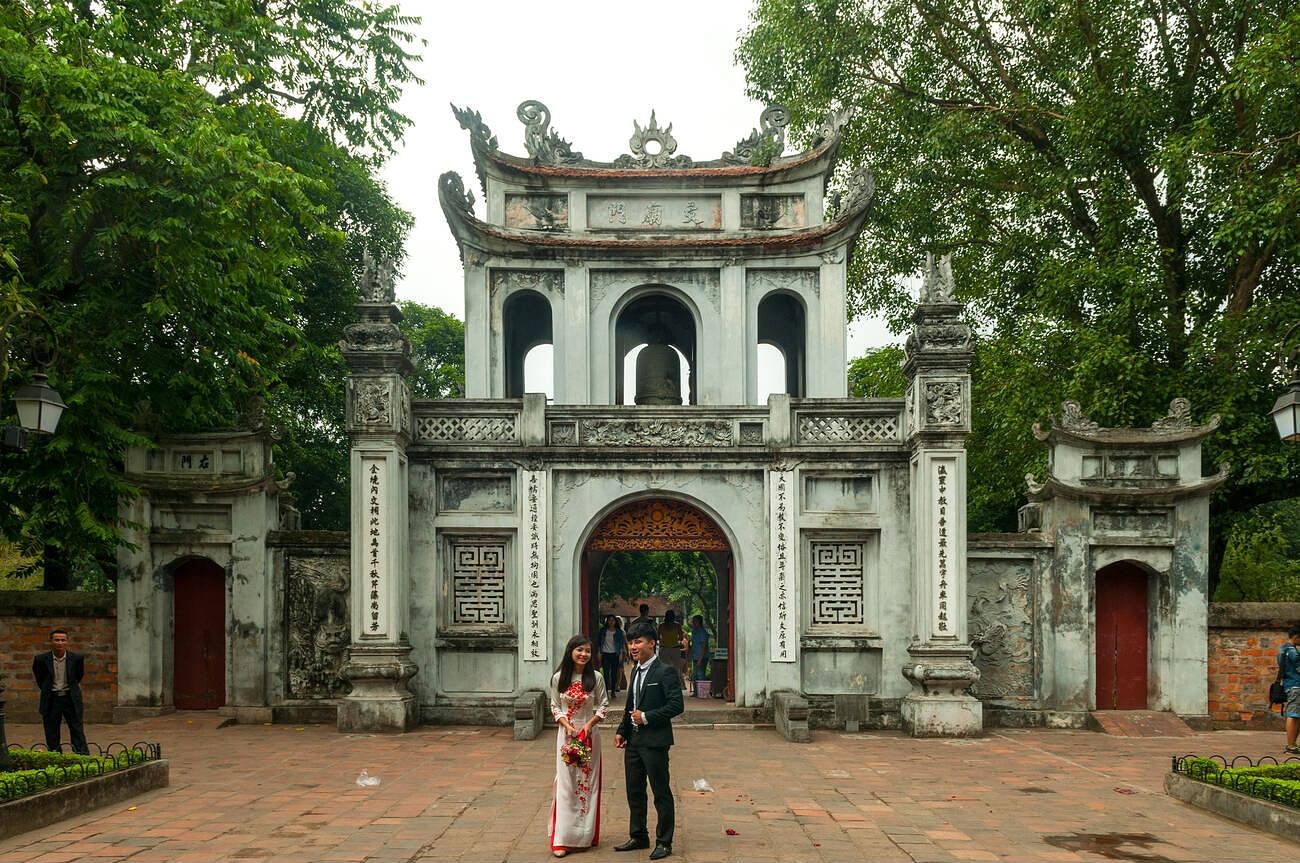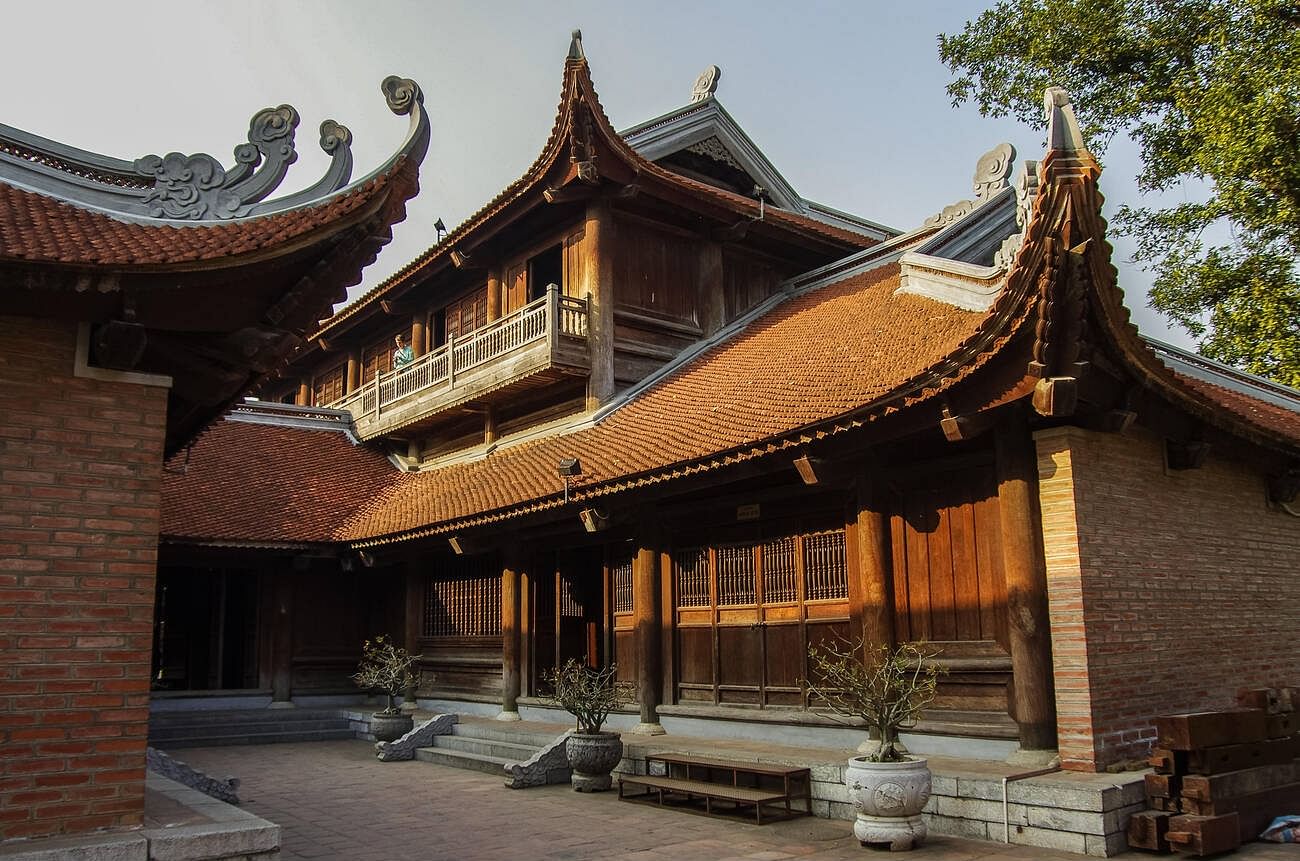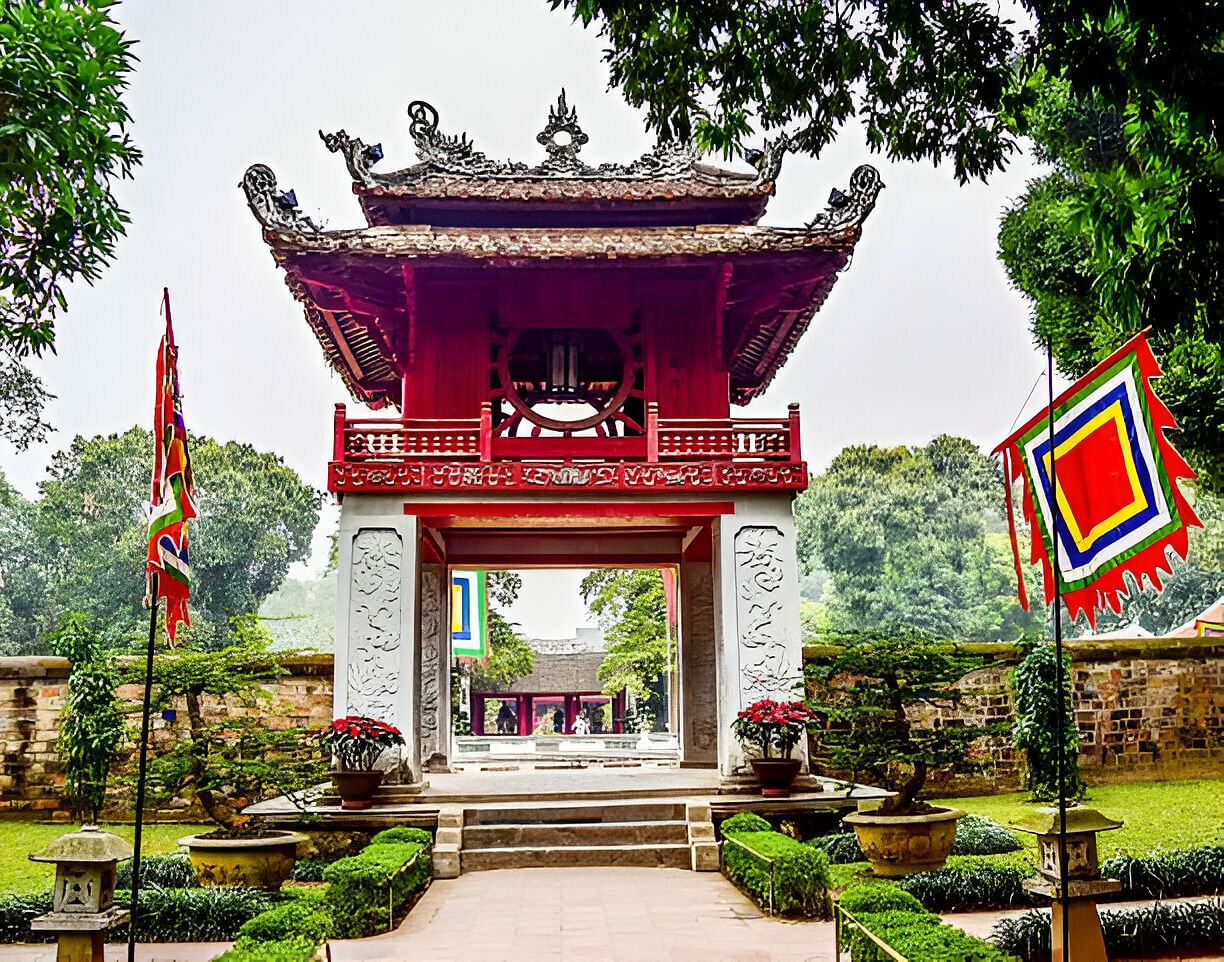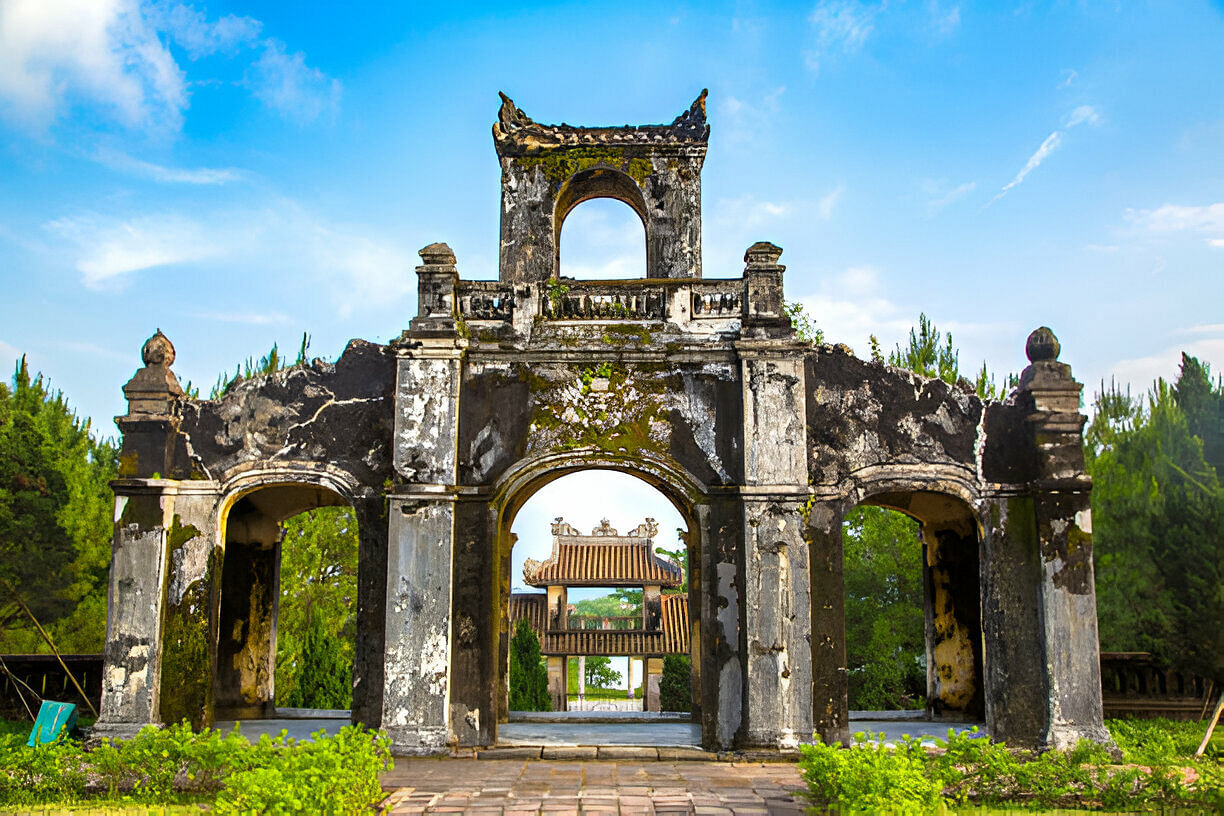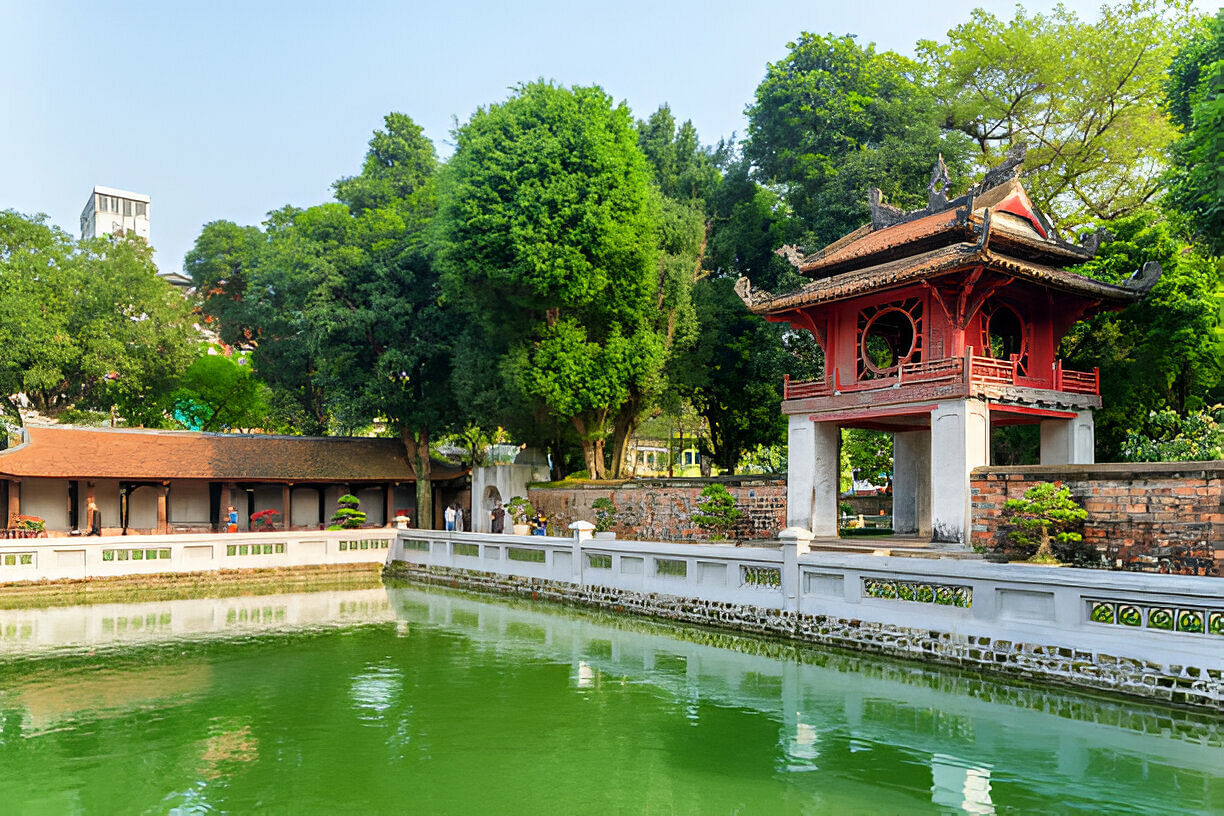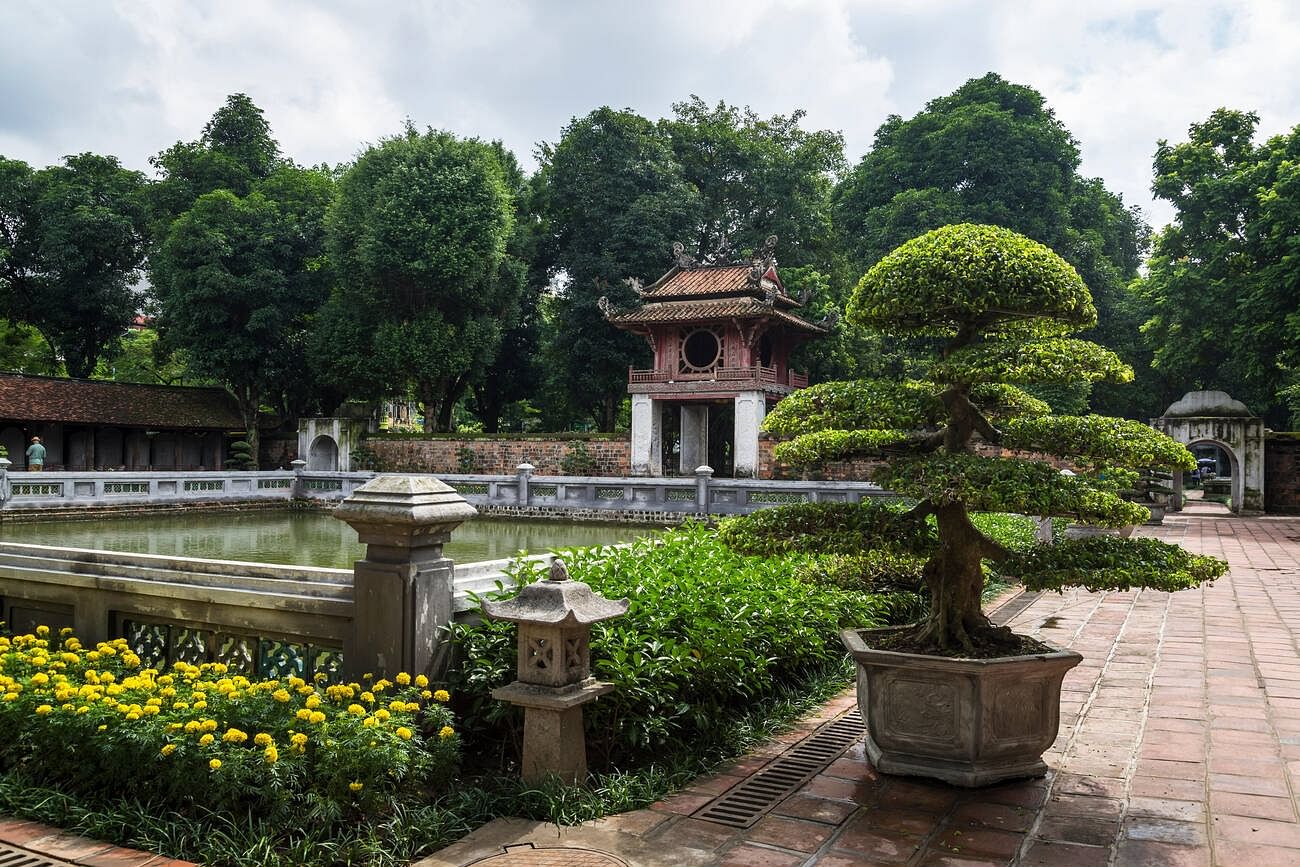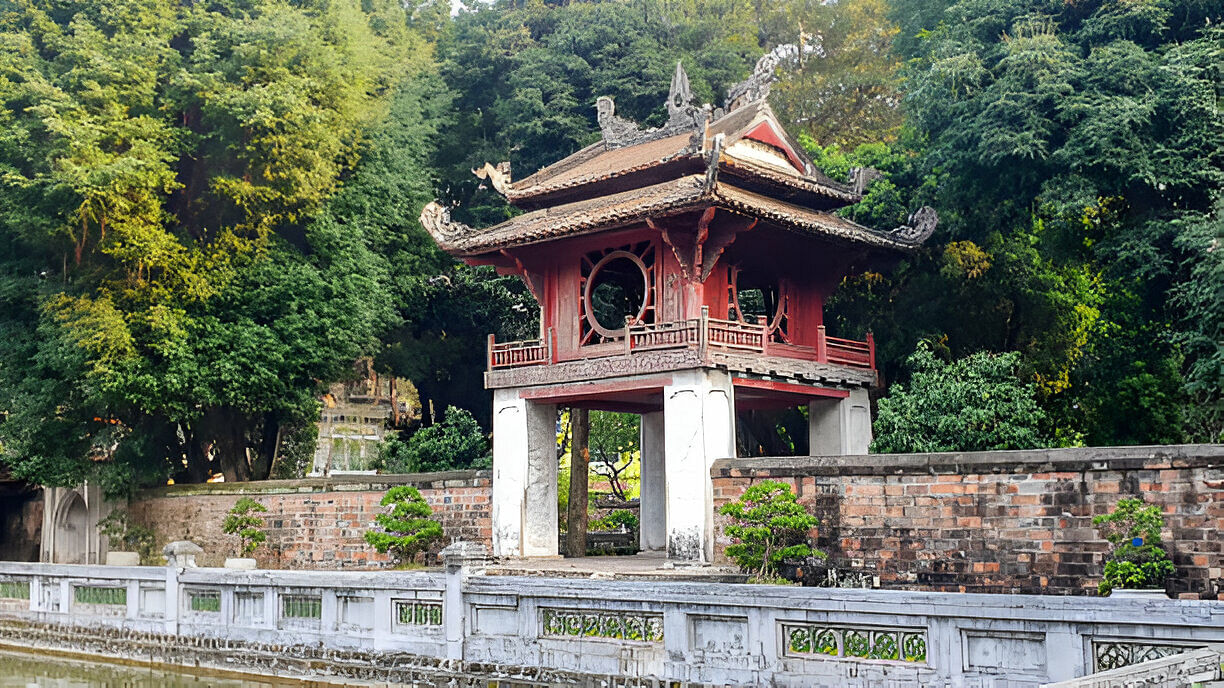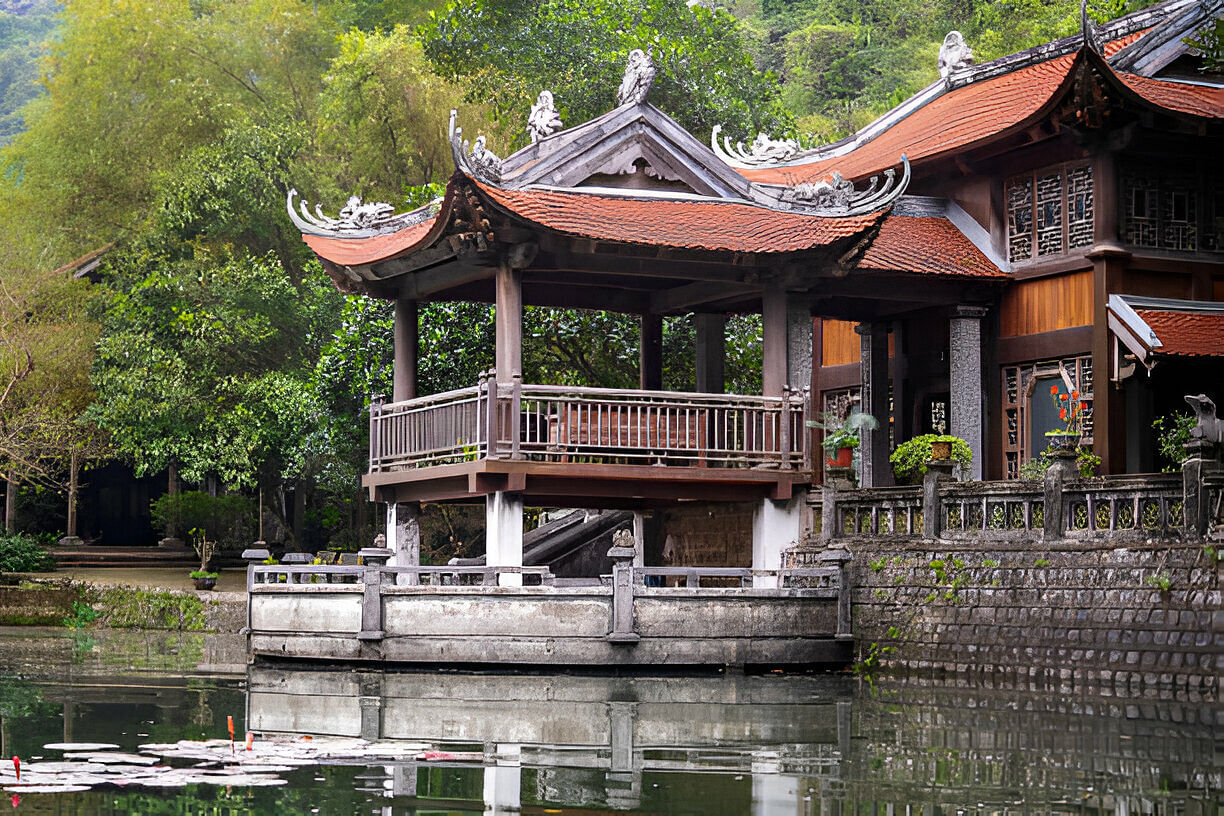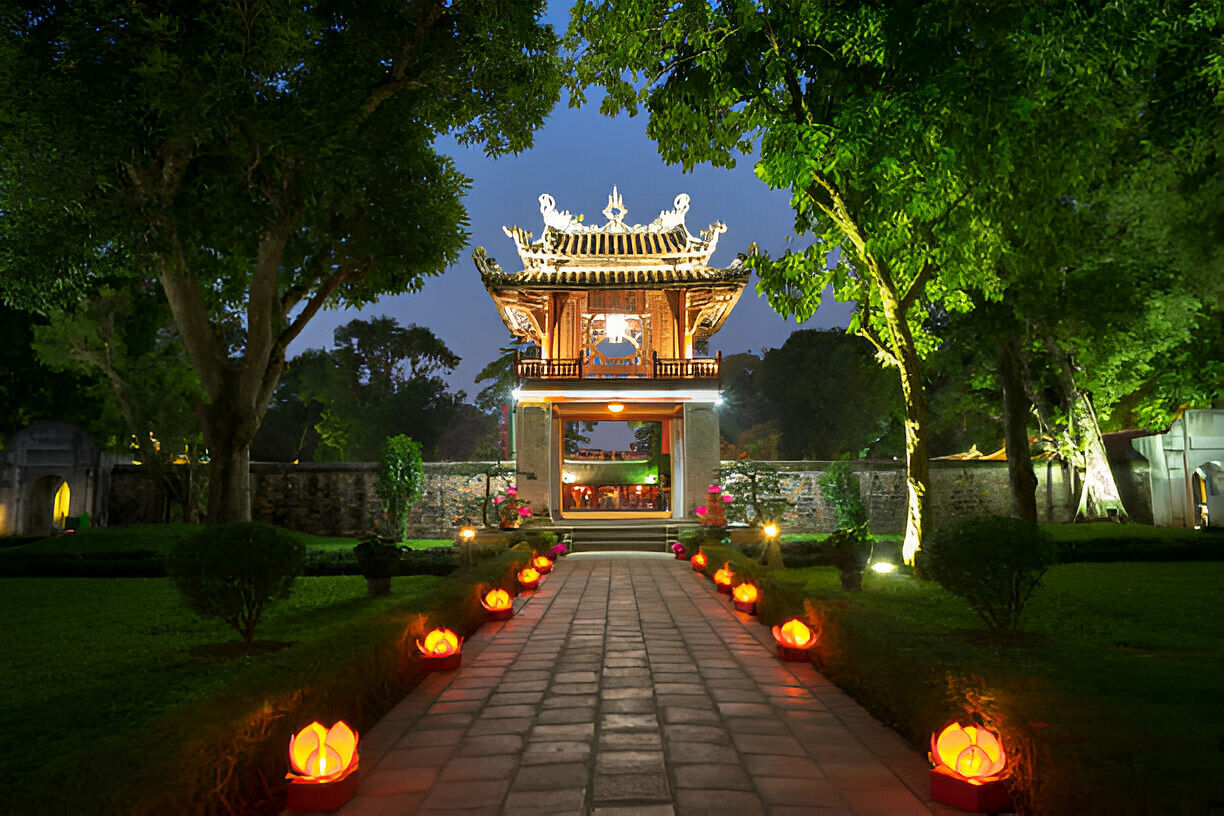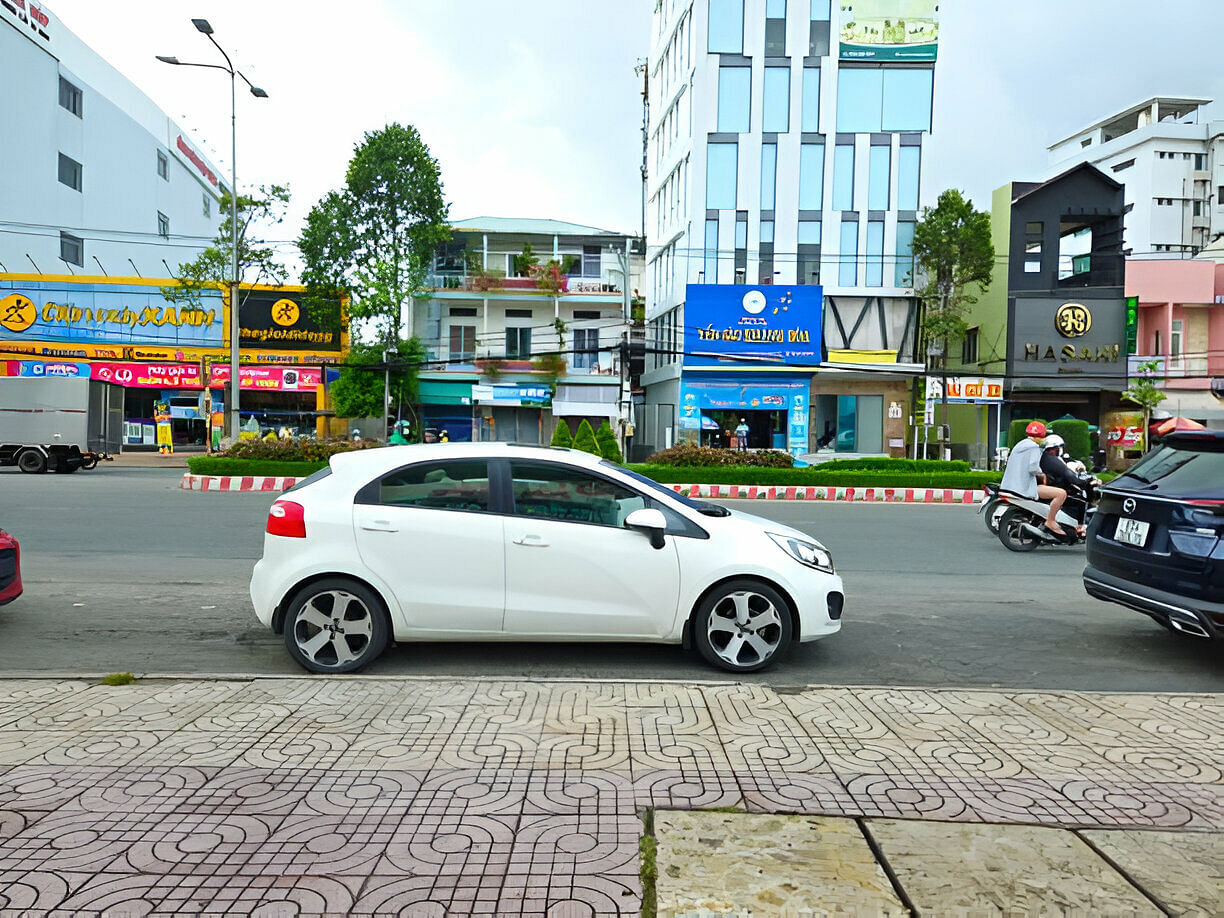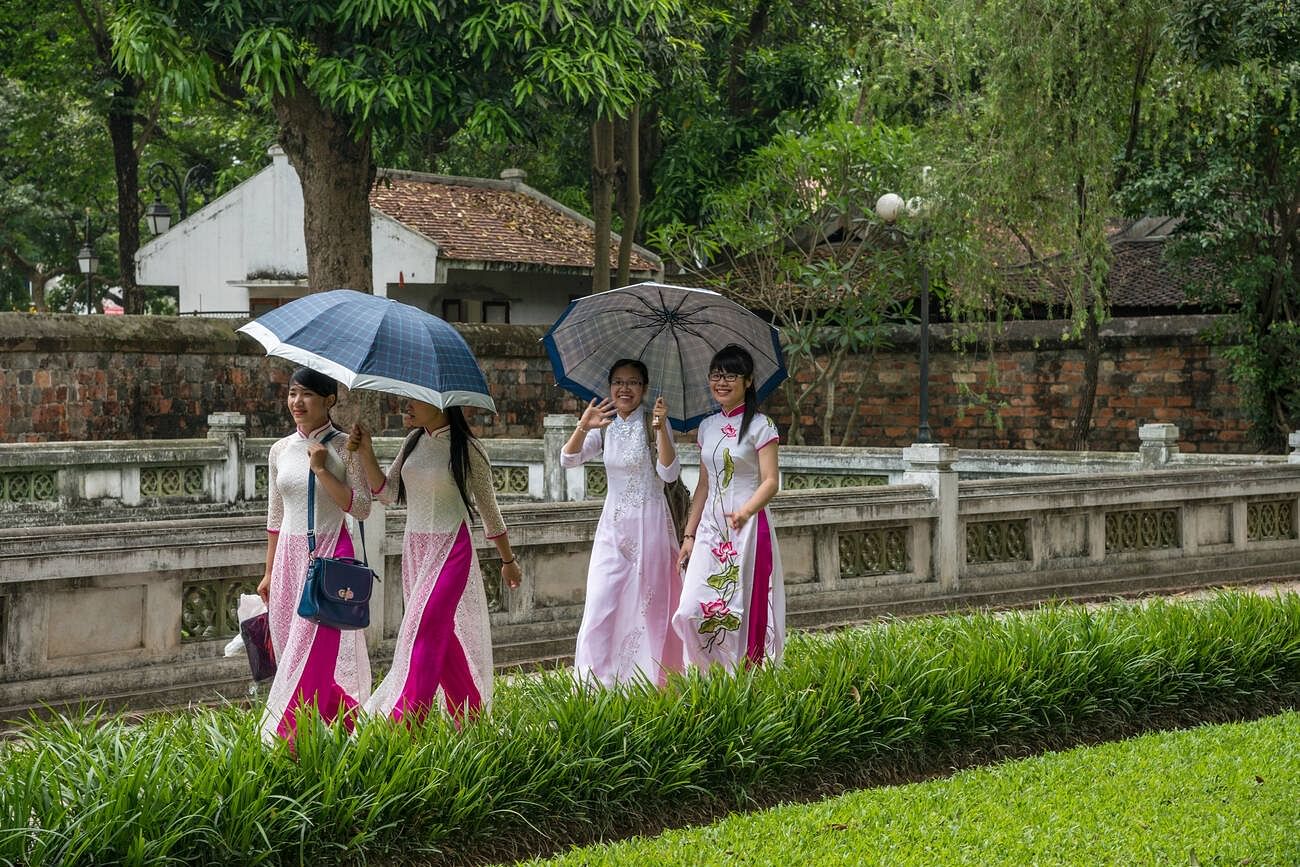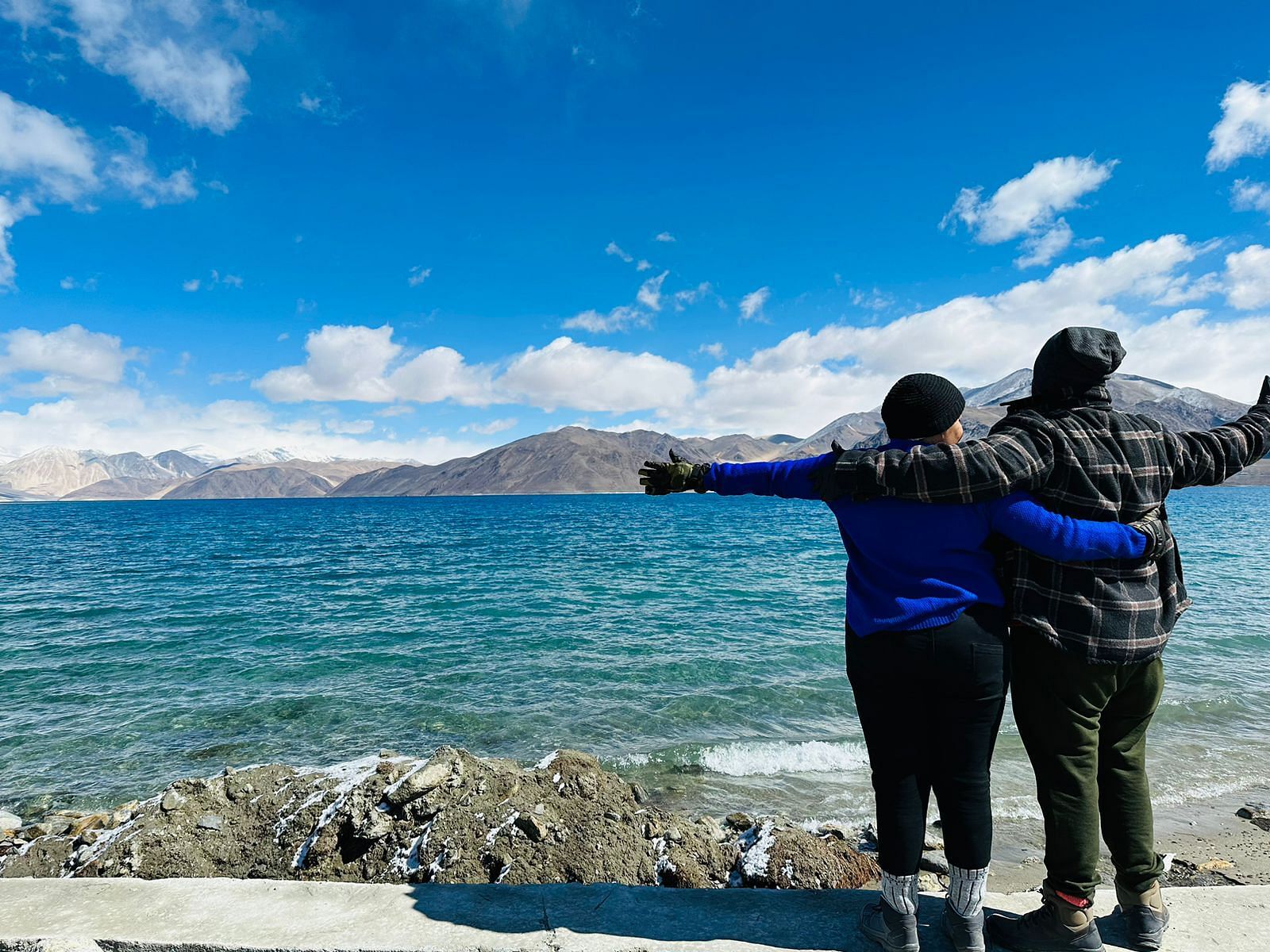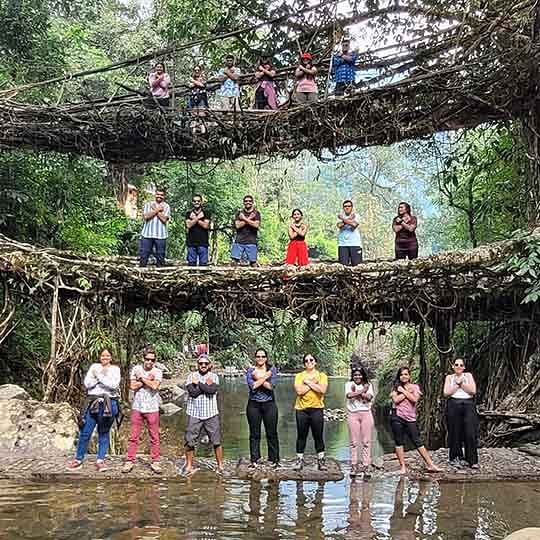Are you looking for a place where Vietnamese history meets architectural beauty? The Temple of Literature is one of the best places to visit in Vietnam. Locally known as the Quốc Tử Giám, which is translated in English as the Temple of Literature. It is located in the capital city, Hanoi, the first university of Vietnam, which was also the largest one when the city was ruled by the Kings.
If you are booking your Vietnam tour package, you must include the Temple of Literature in Hanoi in your itinerary. It was opened to promote good customs and humanity, which will eventually build a better society.
Here, you can participate in various activities which are pre-scheduled on the official website and considered one of the best things to do in Vietnam. So, whether you want to go back in time or admire the architectural beauty, the Temple of Literature in Vietnam will not disappoint you.
Built in the year 1076, the Temple of Literature, Hano is one of the most famous attractions among tourists. Largest university at the time of the monarchy was established by Emperor Ly Thanh Tong. The place is nothing less than a paradise for history buffs as you will go back in time while exploring this place.
Also Read: Discover the Thrill with Adventure Activities in Vietnam 2025
Let’s look into the journey of Temple of Literature history:
- 1070: Founded by Emperor Ly Thanh Tong to teach people to learn about humanity, respect and integrity.
- 1076: Quốc Tử Giám, which is also known as Imperial Academy, is titled Vietnam’s first national university.
- 1253: Trần Thái Tông expanded this place by which common people who are talented are given a chance to enrol in the university which will eventually shape Vietnam’s education.
- 1370: In this year a scholar Chu Văn An was honoured, and eventually given moral values of education.
- 1484: Lê Thánh Tông, introduced Stone steles to honor doctoral graduates and showed respect for scholars.
- 1802: The Nguyễn Dynasty moved the national university to Huế. However, Văn Miếu continued to be an important spiritual and cultural site.
- 1999: The university has been restored for Hanoi’s 990th anniversary, keeping the Temple of Literature history alive for today’s visitors.
Also Read: Find The Authentic Taste in Top 10 Restaurants In Vietnam
The Temple of Literature, Hanoi follows traditional Vietnamese design, which features a balanced layout and well-organized structures. It covers more than 54,000 square meters and has five different courtyards. Each courtyard has its own special features that tell a part of Vietnam's scholarly history. More than its history, the architectural design of the Temple of Literature attracts all around the world.
Detailed Exploration of the Five Courtyards
1. First Courtyard: The Great Middle Gate (Dai Trung Mon)
When you arrive at the Temple of Literature, you will see the main entrance. This gate welcomes you into the peaceful surroundings of the temple. On each side of the main gate is the Virtue Gate which is locally known as Cổng Thành Đức whereas the Talent Gate is locally called Cổng Thành Công. These gates represent important qualities for scholars which continue to inspire people even today. The Virtue Gate stands for moral integrity and righteousness whereas the Talent Gate showcases intellectual excellence and academic success.
2. Second Courtyard: The Pavilion of Constellation (Khuê Văn Các)
One of the most important courtyards, Khuê Văn Các, is also featured on Vietnam’s 100,000 VND banknote. Built-in the year 1805, standing on four white-washed stone pillars, its upper floor features circular windows symbolizing the sun and moon, representing the harmony of heaven and earth.
The pavilion honours education, literature, and academic excellence. Named after the Khuê star, a symbol of scholarship, it was a venue for literary ceremonies and a tribute to scholars who passed royal examinations.
Also Read: 21 Best Places For Shopping In Vietnam
3. Third Courtyard: The Well of Heavenly Clarity (Thien Quang Well)
The Well of Heavenly Clarity which is locally known as Thien Quang Well is a peaceful pond that represents purity and wisdom. You will find stone tablets on turtle-shaped bases around this pond. You will be amazed that these tablets have the names of scholars who did well in royal exams.
4. Fourth Courtyard: The Gate to Great Success (Dai Thanh Mon)
The 4th courtyard is the Gate to Great Success i.e. Dai Thanh Mon which is dedicated to Chinese philosopher Confucius. This hall houses altars where students once prayed for academic success, reflecting the deep Confucian values of respect for knowledge and teachers. This courtyard of the Temple of Literature symbolized the moral and intellectual foundation of education. The solemn architecture underscores the reverence for learning and the prestigious status of the university.
5. Fifth Courtyard: The Grounds of the Imperial Academy (Quoc Tu Giam)
The Fifth Courtyard of the Temple of Literature Hanoi Vietnam, known as The Grounds of the Imperial Academy i.e. Quốc Tử Giám, is a historically significant site as Vietnam’s first national university, established in 1076 under Emperor Lý Nhân Tông. It was the centre for Confucian education, training scholars, mandarins, and royalty, shaping Vietnam’s intellectual and political history.
This courtyard showcases exhibits on the Temple of Literature history in which you can explore ancient books, study materials, and records of royal examinations. It will take you back in time through the traditional classrooms, gain insights into the rigorous Mandarin examination system, and appreciate the architectural heritage of the Temple of Literature in Vietnam.
Also Read: 25 Must-Visit Indian Restaurants in Vietnam
Cultural and Educational Significance
The Temple of Literature in Vietnam played a very important role in promoting Confucian education and values in the country. The temple served as a center for scholarly activities and royal examinations which helped in nurturing generations of Vietnamese intellectuals. The preservation of stone steles with the names of scholar candidates shows that the country values academic achievements.
Also Read: Your Ultimate Guide To The 8 Most Iconic Hindu Temples In Vietnam
Today, the Temple of Literature in Hanoi, Vietnam is a popular tourist destination all over the world attracting visitors with its historical significance and serene ambience. It also serves as a venue for cultural events, traditional ceremonies, and educational activities, symbolizing Vietnam's rich intellectual heritage and commitment to learning. The place hosts various educational temporary programs, workshops, competitions, exhibitions and many more things in which you can enrol from their official website at your convenience.
Visitor Activities in the Temple of Literature
There are various activities which are designed to provide a comprehensive and immersive experience, ensuring you leave with an understanding of the Temple of Literature's role in Vietnam's heritage. These activities also enhance your experience:
- Guided Tours: The Temple of Literature in Vietnam offers various knowledgeable guides offer tours that provide in-depth insights into the Temple of Literature’s history, architecture, and cultural significance.
- Cultural Performances: The place hosts many cultural performances at scheduled times which include traditional music and dance performances. This is held within the temple grounds, allowing you to immerse yourself in Vietnam's artistic heritage.
- Calligraphy Sessions: You can also become a student at the First University of Vietnam by participating in the workshops that are available. In these workshops, you can learn and practice the art of Vietnamese calligraphy, a revered cultural tradition.
- Exhibitions: The temple frequently hosts exhibitions showcasing artifacts, historical documents, and artworks related to Vietnam's educational and cultural history which will definitely take you back in time.
Temple of Literature Timing
The Temple of Literature's opening hours start from 8:00 AM in the morning and ends at 5:00 PM in the evening. However, the Temple of Literature timings may vary on the days of workshops, programs or any other activities hosted by the place.
Temple of Literature Entry Fee
The entry fee for the Temple of Literature may vary depending on the time of your visit. Here is the breakage of ticket prices:
- 70,000 VND for adults
- 35,000 VND students with student ID cards
- 35,000 VND for people with severe disabilities, and elderly people (Vietnamese citizens aged 60 or older, with citizen ID cards).
- Children under 16 years of age can enter the temple for free.
- The price for automatic commentary in a foreign language is 100,000 VND
Also Read: Top 20 Street Food in Hanoi: A Guide to Must-Try Dishes
How to Reach the Temple of Literature
Located approximately 3 kilometres west of Hanoi's city centre. Here are some convenient ways to get there:
- By Car or Taxi: A drive from central Hanoi to the temple typically takes about 10 to 15 minutes, depending on traffic conditions. This is a straightforward option, especially for those unfamiliar with the city's public transportation system.
- By Bus: Hanoi's public bus system offers several routes that pass near the Temple of Literature. Buses numbered 02, 23, 25, 38, and 41 have stops in close proximity to the temple grounds. This is an economical choice for travelers comfortable with using local transit.
- On Foot: For those who enjoy walking, the temple is about a 30 to 40-minute stroll from Hoan Kiem Lake, allowing you to experience the city's vibrant streets and local life along the way.
Best Time to Visit Temple of Literature
To fully appreciate the serenity and historical significance of the Temple of Literature, timing your visit can make a significant difference:
- Time of Day: Arriving early in the morning, preferably when the temple opens at 8:00 AM, allows you to explore the site with fewer tourists and in cooler temperatures. This peaceful ambience enhances the overall experience.
- Day of the Week: Weekdays are generally less crowded compared to weekends. Planning your visit between Monday and Friday can provide a more tranquil environment, ideal for reflection and unhurried exploration.
- Season: Hanoi experiences its most pleasant weather during the spring (February to April) and autumn (September to November) months. These periods offer milder temperatures and lower humidity, making outdoor activities more enjoyable. However, the temple is open year-round, and each season brings its unique charm to the landscape.
Guidelines to Visit the Temple of Literature
- As a place of historical and cultural significance, it's recommended to wear attire that covers your shoulders and knees.
- Keep noise levels low, especially in worship areas, to preserve the serene atmosphere.
- While photography is allowed, avoid using flash and refrain from taking photos in restricted areas.
Tips for Temple of Literature
- It is suggested to come early morning or late afternoon for fewer crowds and cooler weather.
- Recommended to spend at least 1-2 hours exploring all five courtyards.
- It is advisable to wear clothes that cover shoulders and knees to respect the cultural site.
- Keep noise levels low, especially in sacred areas.
- Avoid flash and respect no-photo zones.
- To keep yourself hydrated, it is advisable to bring a bottle of water, especially in hot weather.
- It is recommended to explore places to visit near the Temple of Literature like Vietnam Fine Arts Museum or Ho Chi Minh Mausoleum.




